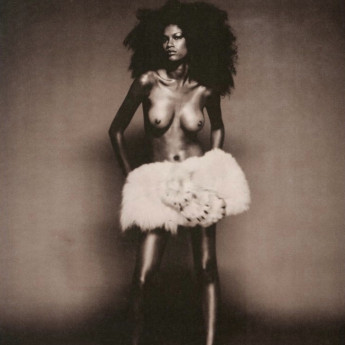
Details
Artist
Styles
Gelatin silver print mounted on paper - Image size - 46.9 x 58.5 cm (18 ½ x 23 in) - Sheet size - 49 x 60 cm (19 ¼ x 23 ¾ in.) // Farnsworth House by Hiroshi Sugimoto is a poetic gelatin silver print from 2001, capturing the modernist icon designed by architect Ludwig Mies van der Rohe. Presented in Sugimoto’s signature blurred style, the image transforms the sleek, minimalist lines of the glass-and-steel structure into a soft, ethereal presence within a natural landscape. This intentional lack of focus creates a dreamlike quality, suggesting themes of memory and impermanence. By reducing the sharpness, Sugimoto shifts attention from architectural detail to the emotional resonance of the building as a fleeting vision. The result is a haunting, contemplative portrayal of one of modern architecture’s most celebrated works, inviting viewers to reflect on the transient beauty of human creations within nature. Mounted on paper, this print underscores Sugimoto’s exploration of time and spatial perception.
Farnsworth House, 2001
form
Medium
Size
49 x 60 cm
- Inches
- Centimeters
Edition
Price
Details
Artist
Styles
Gelatin silver print mounted on paper - Image size - 46.9 x 58.5 cm (18 ½ x 23 in) - Sheet size - 49 x 60 cm (19 ¼ x 23 ¾ in.) // Farnsworth House by Hiroshi Sugimoto is a poetic gelatin silver print from 2001, capturing the modernist icon designed by architect Ludwig Mies van der Rohe. Presented in Sugimoto’s signature blurred style, the image transforms the sleek, minimalist lines of the glass-and-steel structure into a soft, ethereal presence within a natural landscape. This intentional lack of focus creates a dreamlike quality, suggesting themes of memory and impermanence. By reducing the sharpness, Sugimoto shifts attention from architectural detail to the emotional resonance of the building as a fleeting vision. The result is a haunting, contemplative portrayal of one of modern architecture’s most celebrated works, inviting viewers to reflect on the transient beauty of human creations within nature. Mounted on paper, this print underscores Sugimoto’s exploration of time and spatial perception.
What is conceptual art?
Sometimes referred to as Conceptualism, this is an art form where the idea(s) or concept(s) behind the work take precedence over material concerns and traditional aesthetics. Many conceptual artworks can be created by anyone simply by following written instructions. The concept or idea is the most essential aspect of the artwork.















